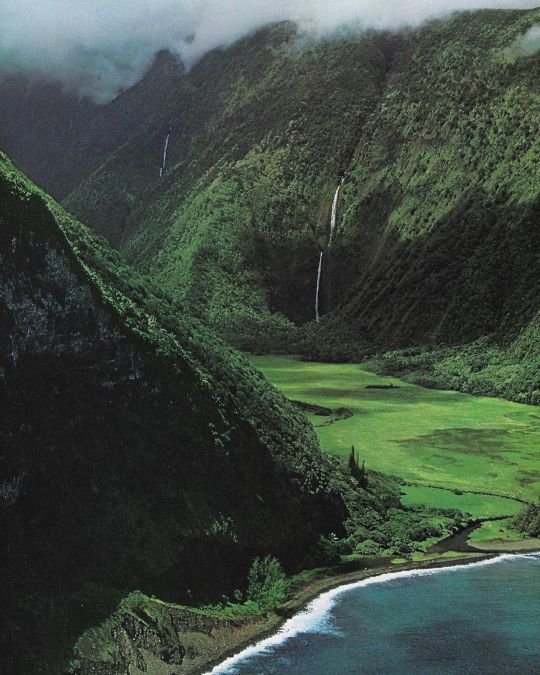#waimanu
Text


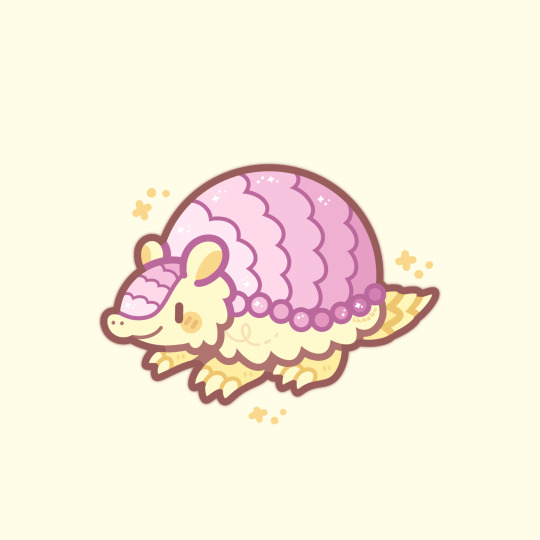




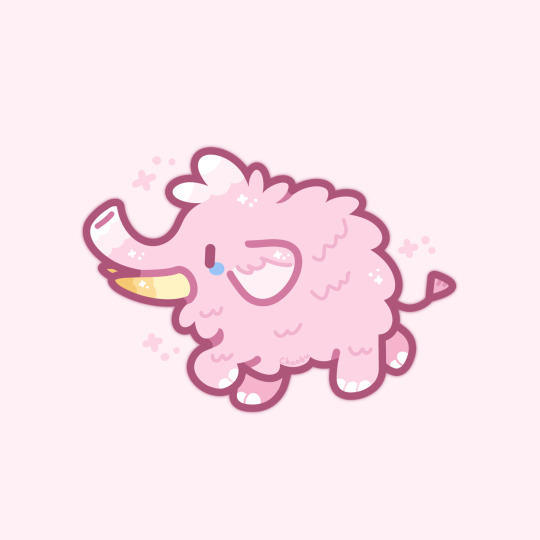
31 days of pastel paleo critters (9-16)!
9. Waimanu
10. Procoptodon
11. Glyptodon
12. Dimetrodon
13. Simbakubwa
14. Drepanosaurus
15. Ichthyosaurus
16. Pygmy Mammoth
#paleontology#prehistoric creatures#Waimanu#Procoptodon#Glyptodon#Dimetrodon#Simbakubwa#Drepanosaurus#Ichthyosaurus#Pygmy Mammoth#mammoth
809 notes
·
View notes
Text
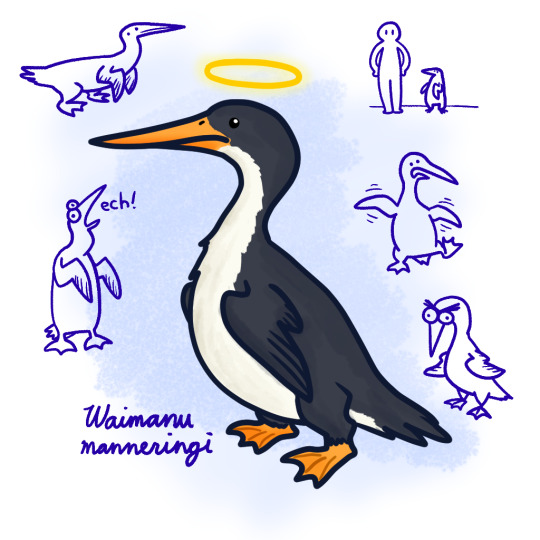
Waimanu is the earliest common ancestor of penguins, having existed 62-60 million years ago. Genetic and protein analysis show that penguins evolved from the same ancestor as albatrosses and petrels.
30 notes
·
View notes
Text
Fossil Novembirb: Day 3 - Race to the Sea

During the start of the Cenozoic, the oceans were relatively empty. Gone were the great marine reptiles like mosasaurs and plesiosaurs, as were ammonites and many large predatory fish. As soon as birds could, they entered the ocean to reap its bounties, whether by flying over the surface or diving to the depths. This is especially evident in Aotearoa (New Zealand), where lots of early seabirds, including the first penguins, were found in Paleocene sediments dating about 62 million years ago.
Kumimanu: One of the largest known penguins, and one of the earliest, standing over 1,5 metres tall and weighing 90-150 kilograms.
Sequiwaimanu: Another early penguin, known from a skull that preserves a long, spear-like beak.
Muriwaimanu: A relatively small early penguin. Like other early penguins, it had relatively long legs and somewhat flexible wings.
Kupoupou: A small early penguin with derived traits, like a flipper-like wing and short legs.
Waimanu: The earliest known penguin, and also relatively large at the size of the modern king penguin (Aptenodytes patagonicus)
Protodontopteryx: The earliest known pelagornithid, large soaring marine birds. This earliest member of the family sports a "modest" 2-metre wingspan.
Clymenoptilon: An early representative of tropicbirds that may have lived somewhat like a tern.
#Fossil Novembirb#Novembirb#Dinovember#birblr#palaeoblr#Birds#Dinosaurs#Cenozoic Birds#Kumimanu#Sequiwaimanu#Kumiwaimanu#Kupoupou#Waimanu#Protodontopteryx#Clymenoptilon
44 notes
·
View notes
Text

FUCK MOSQUITOS‼️THOSE BITCHES NEED TO BURN IN HELLLL‼️🦟❌🦟❌🦟❌🦟❌🦟❌🦟❌
#shitpost#art#animals#not american#hate it#hell no#mosquito#fuck mosquitoes#waimanu#penguin#prehistoric#paleoart#paleontology#prehistoric planet#prehistoric life#prehistoric animals#prehistoric art#prehistoric penguin
1 note
·
View note
Text
Flocking Together
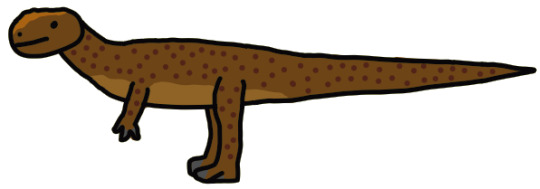
Yangchuanosaurus

Jaekelopterus
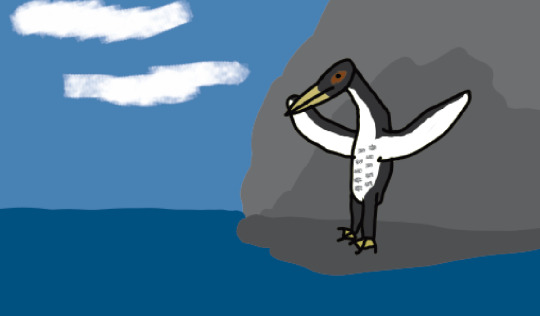
Waimanu
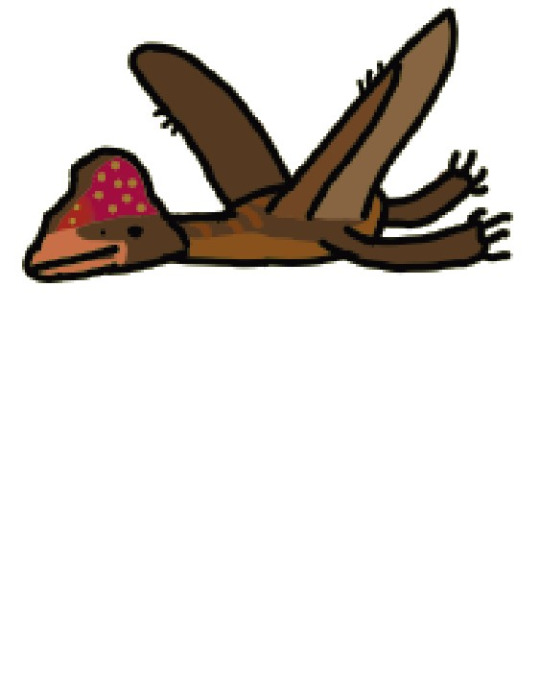
Huaxiadraco
1 note
·
View note
Note
today i am delighted to learn of the existence of Waimanu, the fattest seal in the world. apparently she is one of only 1500 hawaiian monk seals which are critically endangered, and she got so big from raiding local fish farms. although apparently her glorious thiccness came at a tragic cost, as reportedly she was so huge that several of her pups have died at this point because she accidentally rolled over on top of them and squished them :(
STOP CRUSHING YOUR CHILDREN YOU ASSHOLE YOU'RE AN ENDANGERED SPECIES

875 notes
·
View notes
Text
ITS ALMOST FOSSIL NOVEMBIRB!!!!!
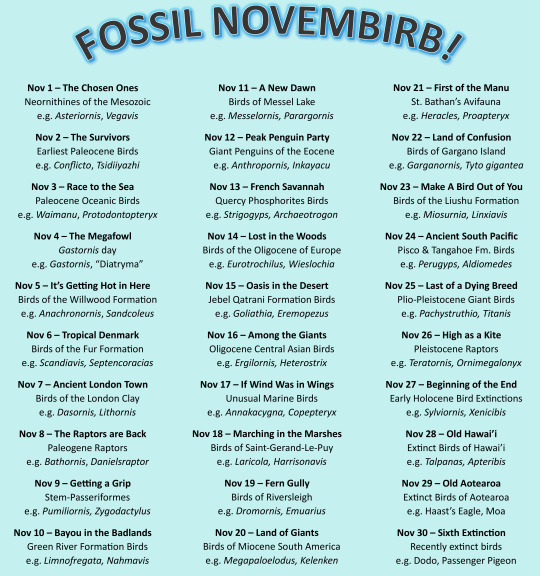
We're going to have a CELEBRATION of FOSSIL NEORNITHINES for this November!!! The extinct members of the only group of dinosaurs we have today!
Each day will have a prompt inspired by the evolution of crown-birds and the amazing forms they have taken over the past 68 million years!
You can respond to each day's prompt however you wish - with drawing and painting, writing, sculpting, music, videos, whatever! Just tag it "#Fossil Novembirb" for me to find it, and it'll get reblogged!
I'm so excited to see the art you guys create!
NOVEMBER 1 - THE CHOSEN ONES
Crown-Birds (Neornithes) known from the Mesozoic Era!
Options include Asteriornis, Teviornis, Vegavis, and "Styginetta"!
These are the only dinosaurs that survived the asteroid!
Theoretically there were also early Palaeognaths and Neoavians - if you want to do some spec evo and hypothesize what you think they might have looked like, go ahead! Follow your dreams!
NOVEMBER 2 - THE SURVIVORS
The earliest birds known after the K-Pg boundary!
Options include Conflicto, Tsidiiyazhi, Australornis, Qinornis, and Qianshanornis!
Birds diverged rapidly after the extinction, so also feel free to dive into spec evo into some of the forms we don't have fossils of!
NOVEMBER 3 - RACE TO THE SEA
The first Marine Neornithines and how they evolved in the early Paleocene!
Includes tons of early penguins like Waimanu, Kumimanu, Sequiwaimanu, Muriwaimanu, and Kupoupou
Also includes the first Pseudo-toothed bird, Protodontopteryx, and the earliest known Tropicbird, Clymenoptilon!
RISE OF THE PENGUINS!
NOVEMBER 4 - THE MEGAFOWL
Gastornis (aka "Diatryma", aka "Zhongyuanus") appeared in the mid-Paleocene and was a feature of the Cenozoic landscape until the end of the Eocene - so we have a whole day JUST FOR IT
Show your love for the Megafowl Gastornis! This giant herbivorous bird was fascinating, and has captured imaginations for decades because of it!
Gastornis is also present in many of the ecosystems described below, such as Willwood, Green River, and Messel, so we also just wanted to make sure people didn't keep picking Gastornis over and over again xD
NOVEMBER 5 - IT'S GETTING HOT IN HERE
The Paleocene-Eocene Thermal Maximum was the most dramatic incident of rapid global warming in the world since the Permian... until today!
It majorly affected the evolution of many things, possibly including birds!
The Willwood Formation straddles the time period of the warming, and has tons of birds that were evolving during that time period! So, for this day, create things involving birds of the Willwood Formation!
Options include the flighted Palaeognaths Lithornis promiscuus and Lithornis plebius; the possible stem-Ostrich Paragrus, the early half-screamer-half-duck Anachronornis, the early owl Primoptynx, and the fascinating stem-mousebird Sandcoleus! And many more!
NOVEMBER 6 - TROPICAL DENMARK
Birds of the Fur Formation, one of the best collections of bird fossils from the early Eocene!
Includes such friends as Scandiavis (an early shorebird), Septencoracias (an early roller), Pellornis (an early rail-esque thing), the utterly mysterious Morsoravis, and the early swift-hummingbird Eocypselus!
This was a tropical shoreline environment with many of the first members of major bird groups we see today!
NOVEMBER 7 - ANCIENT LONDON TOWN
Across the shore from Fur was the London Clay Formation, a lush tropical forest near the warm shallow ocean
In addition to a truly alarming quantity of plant fossils, this is a notable locality for early birds, featuring many early members of major groups much like the Fur Formation
Options include Dasornis (a pseudotoothed bird), Pulchrapollia (one of the Parrot-Passerines of Prey), Nettapterornis (another stem-duck), Nasidytes (an early loon), Charadriisimilis (an early shorebird), Archaeodromus (a trogon-like member of Strisores), Eotrogon (an actual early Trogon), Lithornis vulturinus (another flighted Palaeognath), Prophaethon (another early Tropicbird), and Ypresiglaux (an early owl) - and so many more!
NOVEMBER 8 - THE RAPTORS ARE BACK
Turns out "Predatory Feathered Thing with Really Sharp Foot Claws" is a very successful niche - not only was there potentially one right after the end of the Cretaceous (Qianshanornis), but other raptors were some of the first birds to succeed around the world in the Eocene
So this day is dedicated to the early raptors of the Cenozoic!
Any "raptor" from the Paleogene is valid - so here are some suggestions:
Early Cariamiformes (Seriemas and Kin) like Bathornis, Dynamopterus, Strigogyps, and the first potential Terror Birds like Paleopsilopterus
Early Owls like Ypresiglaux and Palaeoglaux
Early Accipitriformes like Horusornis
Early Falcons like Antarctoboenus, Masillaraptor, and Danielsraptor
And of course the ever popular "Parrot-Passerines of Prey" like Tynskya and Messelastur
NOVEMBER 9 - GETTING A GRIP
Half of all living birds are Passeriformes - aka "Perching Birds" - but this wasn't always the case! For most of Earth's history, many other kinds of tree birds were extremely common
Where did this behemoth group of tiny dinosaurs come from? That's the subject of this day's prompt!
In the Eocene, the first birds closer to Passeriformes than to Parrots evolved, and they came in a huge variety of forms! So on Nov 9th, we're going to celebrate this group's interesting beginnings!
Options for this include Parapsittacopes, Eofringillirostrum, Pumiliornis, Psittacopes, Zygodactylus, Primozygodactylus, Psittacomimus, Sororavis, Morsoravis, and Eozygodactylus! Go wild!
NOVEMBER 10 - BAYOU IN THE BADLANDS
Back to specific ecosystems! We're visiting the world-famous Fossil Lake of the Green River Formation!
This environment, during the Early Eocene, was a thriving tropical lake and forest ecosystem filled with tons of early Neornithines as well as mammals and other animals
Gorgeous fossils have come out of this lake, showing truly amazing detail of feathers and other features for these birds!
So here you can feature Prefica (a potential early Oilbird), the flighted Palaeognath Calciavis, the stem-turaco Foro, the early mousebird Celericolius, the possible shore-bird Nahmavis, a potential cuckoo roller Plesiocathartes, the Flamingo-Duck Presbyornis, the early landfowl Gallinuloides, the swift-hummingbird Eocypselus, and the Frigate Bird Trying at being a Gull Limnofregata - and so many more!
NOVEMBER 11 - A NEW DAWN
We're finally moving on to the middle Eocene - and the Messel Lake ecosystem, famous from the first episode of Walking with Beasts (hence the name of the day)!
(If you're going "wait, that episode acts like nothing happened between the K-Pg and Messel, but here you have 10 days worth of stuff" .... yeah. Walking With Beasts skipped the Paleocene and early Eocene and I am... very pissed. Still.)
You know about the tons of early mammals from this tropical lake ecosystem, but it was filled with tons of early birds as well!
There's the early ostrich Palaeotis, the crane-rail Messelornis, the almost-flamingo Juncitarsus, the freshwater Booby Masillastega, the early hoopoe Messelirrisor, Selmes (a mouse bird with stubby toes), the early ibis Rhynchaeites, the early nightbird Hassiavis, the early swift Scaniacypselus, an early roller with known colors Eocoracias, and the early potoo Paraprefica - and many others!
NOVEMBER 12 - PEAK PENGUIN PARTY
As the Eocene continued, penguins achieved true megafaunal status - there were tons of them, they were huge, and they were all over the oceans of the Southern Hemisphere
While penguin diversity never did recover after the Eocene-Oligocene extinction event, this golden age deserves celebration!
Some of these fascinating peak penguins include Palaeeudyptes, Anthropornis, Icadyptes, Inkayacu, Perudyptes, and Kairuku!
NOVEMBER 13 - FRENCH SAVANNAH
As the Eocene began to dry up and cool down, plains grew across the world where the tropical forests once had been
One of the most famous later-Eocene fossil sites for birds is the Quercy Phosphorites location, a French formation with tons of interesting fossil birds!
Here we start to see the early forms of Neornithine Dinosaurs we saw in the Paleocene-Early Eocene diverge and specialize further - often in particularly weird or interesting ways!
So here we have the duck-ish chicken Paraortyx, the secretarybird Pelargopappus, you can also bring back Dynamopterus from earlier, there is the stem-chicken Quercymegapodius as well as stem-parrots like Quercypsitta, the seriema-like Strigogyps, the sandgrouse relative Archaeoganga, Archaeotrogon shows up again, the swift relative Aegialornis, a potential woodpecker relative Sylphornis, and more owls like Palaeoglaux! Lots of cursorial predators in this ecosystem!
NOVEMBER 14 - LOST IN THE WOODS
As the Oligocene dawned, forests did grow back in Europe, though they were now temperate and dry as opposed to the paratropical rainforests of before
This lead to wide diversification of tree-dwelling birds, and so here we will celebrate the birds of the Oligocene of Europe!
We start to really see modern-esque birds at this point, though of course we still have 30 million years of evolution to go!
Here you can feature the early eagle/hawk Aviraptor, the European Hummingbird Eurotrochilus, the seabird relative Rupelornis, the early woodpecker-toucan Rupelramphastoides, the tody Palaeotodus, the proper Passerine Wieslochia, the possible shorebird Turnipax, the mousebird Oligocolius, the hoopoe Laurillardia, and the trogon Primotrogon which we know the colors of!
NOVEMBER 15 - OASIS IN THE DESERT
The Jebel Qatrani Formation of Egypt shows the beginnings of the famous African Grassland animals, as well as many early members of iconic African animal groups such as primates - and, of course, birds!
Taking place in the early Oligocene, this formation was a tropical/subtropical lowland plain filled with ponds and streams and other waterways - aka, tons of swamps surrounded by plains
As such, this place is infested with waterbirds!
Here we have a fossil relative of the Shoebill Goliathia, as well as the jacanas Janipes and Nupharanassa, the giant stork Palaeoephippiorhynchus, the herons Nycticorax and Xenerodiops, and the mystery Palaeognath Eremopezus!
NOVEMBER 16 - AMONG THE GIANTS
Once again we're just fully committing to the Walking With Beasts nostalgia bc these are the birds we wish were in it more okay we said it
Anyways there were some interesting large birds in the plains of the "Land of Giants" episode so picture these guys alongside the Indricothere etc.
In general we're covering the latest Eocene through the Oligocene of Central Asia
Here we have the enigmatic ratites Ergilornis and Sonogrus, the pseudo-toothed bird Caspiodontornis, the owl Heterostrix, and the stem-flamingo Agnopterus
NOVEMBER 17 - IF THE WIND WAS IN OUR WINGS
We all focus on penguins, but over the Cenozoic, plenty of weird birds have evolved for marine life, and boy are they bizarre!
So for Nov 17, we're focusing on the unusual marine birds of the Cenozoic!
This includes any members of the Pelagornithids - aka the Pseudo-toothed birds - as well as the Plotopterids - the Boobies that became Penguins! Pelagornis and Copepteryx are the best known taxa from each, respectively, but there are plenty more!
But that's not all! We have the flightless auks Miomancalla and Mancalla, the large flightless marine duck Chendytes, and who can forget the weird flightless marine swan Annakacygna! Tons of options to choose from!
NOVEMBER 18 - MARCHING IN THE MARSHES
We're now starting our transition from the Paleogene into the Neogene, beginning with the brackish marsh ecosystem preserved at Saint-Gerand-Le-Puy in France!
This Miocene locality preserves a wide variety of birds that are near modern, but not quite - a sort of "uncanny valley" of bird evolution, all set in a somewhat-salty somewhat-not wetland ecosystem
Options for dinosaurs here include Harrisonavis, a transitional flamingo; the early gull/tern Laricola, the enigmatic duck Mionetta, the stork Grallavis, the pratincole Becassius, the swimming-flamingo Palaelodus, the early cormorant Nectornis, the seed-eating pheasant Palaeortyx, the early loon Colymboides, and the mysterious shorebird Elorius!
NOVEMBER 19 - FERN GULLY
Riversleigh is one of the most famous fossil sites in the world, preserving the evolution of the strange and unique animals known today in Australia, during the Oligocene to Miocene transition
Most often, we focus on the bizarre mammals found at Riversleigh, and for good reason - it's a Marsupial Party! - but the birds here are fantastic as well
This ecosystem was a rich rainforest that transitioned over the period of deposition into a semiarid grassland, and covers 20 million years of animal evolution during that transition
Options for birds here include the butcherbird Kurrartapu, the fossil Sittella Daphoenositta trevorworthyi, the Mihirungs ("Demon Ducks") Dromornis and Barawertornis, the Emuwary Emuarius, the early magpie-goose Eoanseranas, the raptor Pengana with flexible ankles, the earliest known species of lyrebird (Menura tyawanoides), the corvid-like Corvitalusoides, the first known cockatoos, the flightless rail-like bird Australlus, the stiff-tailed duck Pinpanetta, the early logrunner Orthonyx kaldowinyeri, and so many more!
NOVEMBER 20 - LAND OF GIANTS
Y'all were probably wondering when we'd get to the Terror Birds and other interesting dinosaurs of South America, so - here we are!
South America, isolated from the rest of the world until the Great American Interchange, featured a wide variety of bizarre and unique animals - not just mammals, but birds and other reptiles as well!
So for Nov 20th, we're looking at the interesting dinosaurs of the "lost continent" during the Miocene epoch, prior to the invasion of North American taxa!
Any Miocene South American Terror Bird (Phorusrachid) is fair game here, so that includes Brontornis, Patagorhacos, Paraphysornis, Devincenzia, Kelenken, Phorusrhacos, Patagornis, Andalgalornis, Psilopterus, Mesembriornis, and Procariama! Note that they did not all live at the same time or even close to each other in location, so do your research on the taxa you pick!
But Terror Birds weren't the only strange dinosaurs in South America at the time! We have the large Teratorn (vulture-like-thing) Argentavis, the *giant* swimming-flamingo Megapaloelodus, the giant Anhinga Macranhinga, the rhea Opisthodactylus, the penguins Palaeospheniscus, Arthrodytes, and Paraptenodytes, the Cathartid Dryornis, the Jacamar Galbula hylochoreutes, fossil Hoatzins like Hoazinavis and Hoazinoides, the giant stork Leptoptilos patagonicus, and the owl Yarquen!
NOVEMBER 21 - FIRST OF THE MANU
Aotearoa has one of the most unique avifaunas in the world today, and I often call it "Mesozoic 2" because of its almost entirely dinosaur-dominated fauna, especially in the past
All great things have to start somewhere or when, and for Aotearoa, that somewhen was after the landmass resurfaced from the ocean for the first time in millions of years - and was quickly inhabited by all kinds of birds and other reptiles (including tuatara) in the Miocene
This ecosystem was a lake bordered by grassy wetland floodplains and subtropical forests, a bit warmer than Aotearoa today
Dinosaurs here include the early Kiwi Proapteryx, an unnamed early Moa, a truly alarming number of waterfowl including shelducks like Miotadorna, stiff-tailed ducks like Manuherikia, and the possible swan Notochen, the small swimming-flamingo Palaelodus aotearoa, pigeons like Rupephaps and Deliaphaps, an early adzebill Aptornis proasciarostratus, flightless rails like Priscaweka, the lake-wanderer Hakawai melvillei, the herons Pikaihao and Matuku, the giant parrot Heracles, proto-keas Nelepsittacus, and the New Zealand Wren Kuiornis. Tons of fun species to choose from!
NOVEMBER 22 - LAND OF CONFUSION
In the Late Miocene to Early Pliocene, the Italian province of Gargano was cut off from the mainland due to rising sea levels, turning it into an island - an island with lots of really strange birds!
This island was cut off from everything else and completely lacked large predators, allowing for a weird variety of animals to evolve and thrive prior to the island rejoining the mainland during the Ice Age
Strange birds of this ecosystem include the extremely old pigeon Columba omnisanctorum, the giant hawk Garganoaetus, the giant flightless goose Garganornis, the giant barn owl Tyto gigantea, the pheasant Palaeortyx volans, and the swift Apus wetmorei!
NOVEMBER 23 - MAKE A BIRD OUT OF YOU
The iconic animals of the Ice Age and recent prehistory had to come from somewhere, and much of this transition is recorded in the Chinese Ecosystem of the Liushu Formation, deposited between 11 and 6.4 million years ago
As grasslands expanded, this ecosystem transitioned from a forest to a wide plains, and many animals adapted for the grasslands accordingly, leading to the appearance of such mammals as Elasmotheriines, Sabercats, Hyenas, Ambelodonts, and a truly alarming quantity of hoofed mammals
Dinosaurs (Birds) adapted to this ecosystem change as well, of course! While most focus on the mammals of Liushu, we're here to showcase the interesting birds that appeared here as well!
Options here include the the very well preserved Falcon Falco hezhengensis, the vultures Mioneophron and Gansugyps, the diurnal owl Miosurnia, the vocally fancy pheasant Panraogallus, the sandgrouse Linxiavis, the Ostrich Struthio (or Orientornis) linxiaensis, and the probable-Ostrich Sinoergilornis
NOVEMBER 24 - ANCIENT SOUTH PACIFIC
Penguins are Bouncing Back! As the Miocene continued and the Pliocene began, many new types of marine birds showed up and were fossilized in locations in Chile (Pisco) and Aotearoa (Tangahoe)
Tons of interesting birds were preserved in this sort of transitional ecosystem, showcasing how birds adapted to changing conditions as the Miocene-Pliocene climatic turmoil continued
These near shore environments are probably more famous for their other animals - things like the giant shark "megalodon", as well as weird whales like Livyatan and Odobenocetops and aquatic giant sloths (like Thalassocnus) and marine crocodilians - but we're here for those dinosaurs!
Options here from the Pisco Formation include the "Toucan-Booby" Ramphastosula, the Cathartid Perugyps, the Booby Sula figueroae, Pelagornithids, Pelicans, and the penguins Spheniscus urbinai and Spheniscus megaramphus, whereas birds from the Tangahoe Formation include the narrow-beaked albatross Aldiomedes, the giant petrel Macronectes, the more regular-sized petrel Procellaria altirostris, the little penguin Eudyptula wilsonae, and the crested penguin Eudyptes atatu!
NOVEMBER 25 - LAST OF A DYING BREED
We all love Megafuana, even though they are usually the "Live Fast Die Young" kind of species - gobbling up resources and growing too big will do that to you
Usually when we hear the term "Megafauna" we think of Mammals and Non-Avian Dinosaurs, but birds have had their share too - and have lost their share as well
So, mainly to cater to the Megafauna Fanbase, here we dedicate a whole day to the giant birds of recent times - Pliocene through Pleistocene - that we have lost to the dramatic climate change of the Ice Age Era. (Those lost in the Holocene will get their own days, see below)
Options for this day include the giant ostrich Pachystruthio, the Mihirung Genyornis, the Terror Bird Titanis, the giant stork Leptoptilos robustus, the giant swan Cygnus falconeri, the giant Anhinga Giganhinga, and of course - we can't forget our friend - the last of the Pseudotoothed Birds, Pelagornis
NOVEMBER 26 - HIGH AS A KITE
In many ways, the real dinosaur winners of the Ice Age were the flying Birds of Prey, as there were many kinds of raptors during the Ice Age and they exploited the new environment expertly
Nothing like being able to traverse huge distances to find places where there are food, amiright?
So this day is dedicated to the fantastic Raptors of the Ice Age, both volant and not!
Here we have some of the last of the Teratorns like Teratornis itself, the Giant Australian Raptor Dynatoaetus, the Australian Vulture Cryptogyps, Woodward's Eagle Buteogallus woodwardi, the tiny Condor Wingegyps, the large Cuban Eagle Gigantohierax, the wandering vulture Neogyps, the Walking Eagle Buteogallus daggetti, the Giant Cuban Stilt-Owl Ornimegalonyx, and one of the last Terror Birds, Psilopterus
NOVEMBER 27 - BEGINNING OF THE END
Oh Holocene Extinctions. As upsetting as they are, they include some of the best known fossil/subfossil birds, so we decided to spend a little extra time on them than they should have based solely on the time length
Here, we highlight the early losses of the Holocene - those dinosaurs that went extinct at the start, largely due to direct human activity such as hunting in addition to the warming caused by the end of the last Ice Age/Glacial Maximum
Days will be dedicated to both Hawai'i (see below) and Aotearoa (again, below), so this is for everyone else!
So options here include the previously mentioned marine duck Chendytes, the giant flightless landfowl Sylviornis from New Caledonia, the famous Elephant Birds of Madagascar, the flightless clubbing-ibis Xenicibis, the weird puffin Fratercula dowi, the giant Bahama Eagle Titanohierax, the Californian Turkey Meleagris californica, and the flightless "Cave Rail" Nesotrochis of the Greater Antilles
NOVEMBER 28 - OLD HAWAI'I
Many, many, MANY unique dinosaurs live on islands. The islands of Hawai'i are no exception, and these islands have lost many unique and fascinating birds over the years - thanks to human activity, invasive cats, colonialism, and climate change
We couldn't possibly ignore them, so for this day, we are hilghlighting these amazing animals found across the archipelago
There are tons of options, but some of our recommendations include the reverse-platypus/Mole Duck Talpanas, the Stilt-Owl Grallistrix, the flightless ibis Apteribis, the Moa-Nalo like Chelychelynechen, Ptaiochen, and Thambetochen, the Wood Harrier Circus dossenus, Hawai'ian Honeycreepers like Drepanis, Aidemedia, Hemignathus, Chloridops, Akialoa, Rhodacanthis, Dysmorodrepanis, Telespiza, and Vangulifer, the Oloma'o and ʻĀmaui thrushes, ʻōʻō's/Hawai'ian Honeyeaters like the Kioea, Kauaʻi ʻōʻō, and Oʻahu ʻōʻō, the giant Hawai'i Goose, the nēnē-nui/wood-walking goose, the Robust Crow, the flightless Laysan Rail, and the O'ahu Petrel
NOVEMBER 29 - OLD AOTEAROA
We're finally here: Pre-Human Holocene Aotearoa, aka Mesozoic 2, aka The Land Where Mammals Ain't Shit
I love Aotearoa so much. Why wasn't I born there. The universe isn't fair.
The ecosystems were very similar to today - podocarp forests and southern beech forests, grass and tussock plains and shrublands, and plenty of coastal habitats, all usually temperate in terms of climate
All named Moa are fair game. All of them, all named members of Dinornithiformes. So the North Island Giant Moa, the South Island Giant Moa, the Bush Moa, the Eastern Moa, the Broad-Billed Moa, the Heavy-Footed Moa, Mantell's Moa, the Crested Moa, and the Upload Moa. Follow your Moa-Filled Dreams!
Obviously there were more than Moa - not just the living species of Aotearoa still with us, but tons of other extinct forms for Fossil Novembirb. This includes the Adzebills, Haast's Eagle (of course), the whēkau/Laughing Owl Ninox albifacies, the New Zealand Goose Cnemiornis, the New Zealand Owlet-Nightjar, the mehonui Diaphorapteryx, the Long-Billed Wren Dendroscansor, the piopio Turnagra, and the Huia
NOVEMBER 30 - SIXTH EXTINCTION
And, for our last day, we cover recent Holocene extinctions (not on Hawai'i or Aotearoa) - the birds/dinosaurs we have lost in the living past, due largely to colonialism, capitalism, globalism, and climate change
Any bird extinct since 1492 not previously covered is fair game, and there are a lot of them. Today, we honor them, however we can.
Some suggestions include the Dodo (of course), the Cuban Macaw, the Pink-Headed Duck, the Northern Curlew, the Great Auk, the Passenger Pigeon, the Carolina Parakeet, the Ivory-Billed Woodpecker, the Labrador Duck, the Saint Helena Hoopoe, and the Spectacled Cormorant; though there are of course many otherse to choose from as well
Kind of a bummer note to end on, but here we are
Living Birds already get tons of time and attention, so we really don't want to include them here - we love them, but the fossils of the Neornithes world deserve love too! So we tried to cover all of the bases, as best as we could!
Remember, Wikipedia, the Paleobiology Database, The Works of Gerald Mayr, the third volume of "Earth Before Us", and the blogs of myself and @albertonykus and @otussketching are all fantastic resources to look for information about these wonderful animals! Also check out Through Time and Clades' "Dinosaurs: The Second Chapter" series and the Raptormaniacs blog from Albert as well!
HAVE FUN! CREATE WHAT YOU DREAM! AND LOVE CENOZOIC DINOSAURS!
HAPPY FOSSIL NOVEMBIRB!
#Fossil Novembirb#Novembirb#Dinovember#birblr#palaeoblr#Birds#Dinosaurs#Cenozoic Birds#Neornithines#Dinovembirb
613 notes
·
View notes
Text

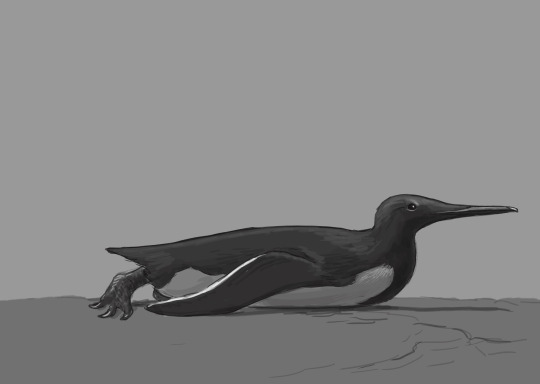


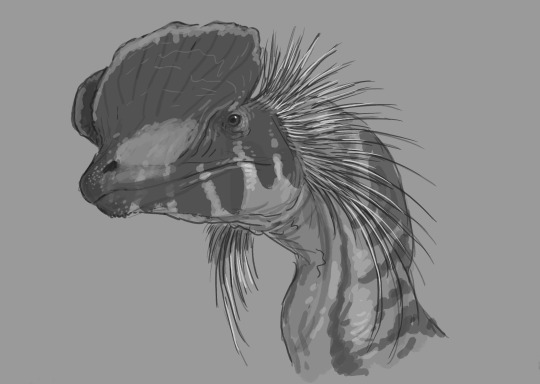
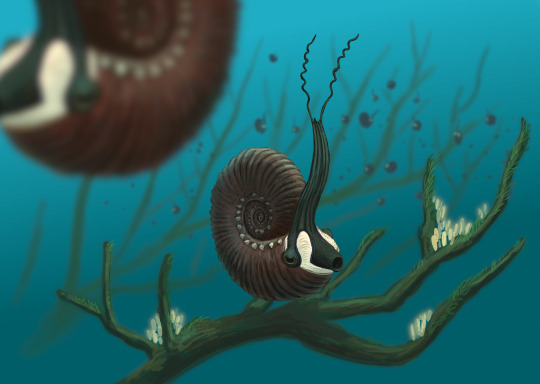
Results from the #paleostream! This one was a mix of wishes by backers for the Paleocene Kickstarter and the usual sketches. Omnivoropteryx, Waimanu, Leviathania, Irritator...
...and my take on the JP Dilophosaurus plus Otoites.
462 notes
·
View notes
Note
waimanu the seal on hawaii is a sight to behold. the roundest of seals
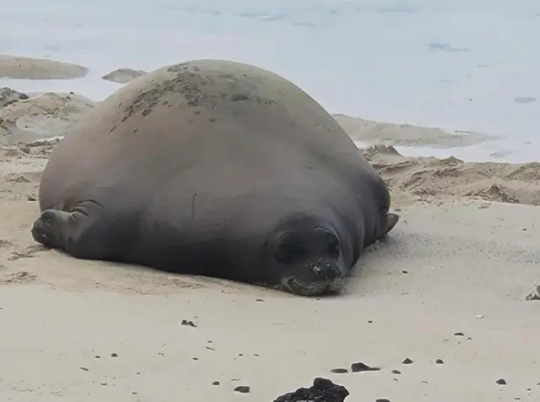
i love her
14 notes
·
View notes
Photo

Waimanu is the largest female Hawaiian monk seal. They’re only found in Hawaii and there’s just 1500 left in the world! via https://ift.tt/GzuTUJM putyouinabettermood.com
34 notes
·
View notes
Text
sorry for not including any sauropods. as if its my fault
jokes. i had to choose between 12 of my faves and unfortunately no sauropods made the cut. (Eoraptor lunensis was close tho, it was either that or O. philoceratops and i only barely like the latter more)
also excluded was Archaeopteryx lithographica bc i had a feeling it would sweep simply by virtue of being the most famous dinosaur on the list by far
9 notes
·
View notes
Text

another paleo doodle i did back in 2022, the waimanu, earliest penguin species
4 notes
·
View notes
Text




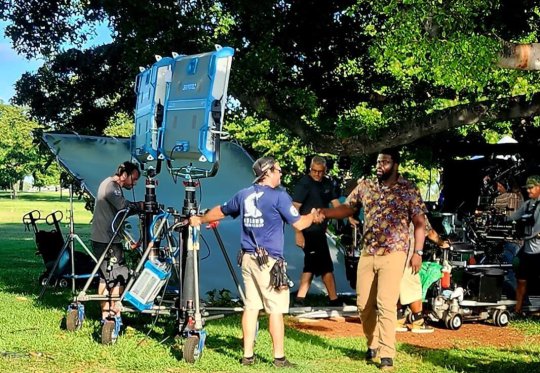

Magnum P.I. Filming yesterday afternoon on the corner of Waimanu St & Cummins St.
#magnum pi#thomas magnum#juliet higgins#magnum x higgins#jay hernandez#magnum pi spoilers#perdita weeks#stephen hill#tim kang
29 notes
·
View notes
Text
Are There Penguins in Alaska?

When thinking of Alaska, images of vast, snowy landscapes, and diverse wildlife, including bears, moose, and eagles, come to mind. But what about penguins? The association of penguins with cold, icy environments leads many to wonder: are there penguins in Alaska?
The Short Answer: No, There Aren't
To cut straight to the point, there are no penguins in Alaska. Penguins are primarily found in the Southern Hemisphere, with a major concentration in and around Antarctica, as well as in parts of South America, Africa, and even as far north as the Galapagos Islands near the equator. However, they do not naturally occur in the Northern Hemisphere, including Alaska.
Why No Penguins in Alaska?
Here are some reasons:
Geographical Isolation
Penguins evolved in the Southern Hemisphere and have never migrated north across the equator. This geographical isolation is a major reason for their absence in the Northern Hemisphere.
Climate and Ecosystem
While Alaska and Antarctica share cold climates, the ecosystems are quite different. Alaska, for instance, has predators like bears and wolves that do not exist in Antarctica. Penguins, having evolved without such predators, might find it difficult to survive in these conditions.
Historical Evolution
The evolution of penguins has been primarily centered around the Southern Hemisphere, where they have adapted perfectly to the oceanic life and food sources available there. The evolutionary path of penguins simply never took them to the Northern Hemisphere.
Penguin-like Birds in Alaska
While there are no penguins in Alaska, the state is home to several seabirds that might be mistaken for penguins due to their appearance and behavior.

Birds like the Puffin, with its black and white coloring and awkward walk, can sometimes be reminiscent of penguins. However, puffins are able to fly, unlike penguins.
Penguins and Human Influence
It's important to note that penguins can be found in zoos and aquariums in the Northern Hemisphere, including in Alaska. However, these are controlled environments where penguins are kept for education and conservation purposes and are not natural habitats for these birds.
Where do Penguins Originate from?
Penguins originated in the Southern Hemisphere. The exact origin of penguins is a topic of ongoing research, but fossil records indicate that the earliest penguins appeared around 60 million years ago, likely in the area that is now Antarctica and New Zealand. These ancient penguins evolved soon after the dinosaurs became extinct.
The oldest known penguin fossil, belonging to a species named Waimanu manneringi, was discovered in New Zealand and dates back to about 60-62 million years ago. This suggests that the evolution of penguins began in the waters around New Zealand and Antarctica.
Over millions of years, penguins have adapted to marine life and are now found in several regions of the Southern Hemisphere, including Antarctica, southern Africa, Australia, New Zealand, and South America.
Their adaptation to cold water and climates is a result of this long evolutionary process, although not all penguin species live in extremely cold environments. Some, like the Galapagos Penguin, are adapted to warmer climates.
Areas Penguins Live in the Southern Hemisphere
Penguins are found in various areas across the Southern Hemisphere, adapting to a range of climates from the icy shores of Antarctica to temperate island coasts. Here are some key regions where penguins live:
Antarctica
The quintessential home of several penguin species, including the Emperor and Adelie Penguins. This icy continent provides the perfect habitat for these species, with its vast, cold environment.
Sub-Antarctic Islands
These include the South Georgia Island, Falkland Islands, and the South Sandwich Islands, among others. These islands are home to species like the King Penguin, Macaroni Penguin, and Rockhopper Penguin.
Southern Coasts of South America
Countries like Chile and Argentina, particularly in regions like Patagonia and the Tierra del Fuego, host species such as the Magellanic Penguin and the Humboldt Penguin.
Southern Africa
The African Penguin is found along the southern coast of Africa, particularly on the coasts of South Africa and Namibia.
Australia and New Zealand
These regions are home to several penguin species. In Australia, this includes the Little Penguin, also found in Tasmania. In New Zealand, species like the Fiordland Penguin, Yellow-eyed Penguin, and the Little Blue Penguin are common. You can find Penguins in Desert as well.
The Galapagos Islands
Located near Ecuador, these islands are unique for being the only place in the Northern Hemisphere where penguins, specifically the Galapagos Penguin, are found naturally.
Each of these regions offers a unique environment that suits the specific needs of the different penguin species, ranging from icy waters to sandy, coastal beaches.
Conclusion
Alaska, despite its cold and icy environment, is not a natural home for penguins. These charming birds are natives of the Southern Hemisphere and have never made their way north to Alaska's shores.
While Alaska boasts a rich and diverse wildlife, to see penguins in their natural habitat, one would have to travel to the southernmost parts of the world. Alaska, however, does offer its own unique and fascinating bird species that are worth exploring.
FAQs
Do penguins live in Alaska?
No, penguins do not live in Alaska. They are native to the Southern Hemisphere and are not found in the wild in Alaska or anywhere else in the Northern Hemisphere.
Are polar bears and penguins in Alaska?
Polar bears are found in Alaska, particularly in the Arctic regions. However, penguins are not native to Alaska or any other part of the Northern Hemisphere, so you won't find them living together in the wild.
Where do penguins live in the US?
Penguins do not live in the wild in the United States. However, they can be seen in various zoos and aquariums across the country, where they are kept in controlled environments.
What kind of bird is like a penguin in Alaska?
The Puffin, particularly the Horned and Tufted Puffins, are birds in Alaska that might resemble penguins due to their black and white coloring and awkward walk. However, unlike penguins, puffins can fly.
Which country has penguins?
Several countries in the Southern Hemisphere are home to penguins, including Antarctica, Argentina, Australia, Chile, New Zealand, and South Africa. Penguins are also found on the Galapagos Islands, which are part of Ecuador.
What animal is unique to Alaska?
One unique animal to Alaska is the Alaskan Moose, the largest of all the moose subspecies. Alaska is also known for its distinct populations of brown bears, including the Kodiak bear, which is found only in the Kodiak Archipelago.
Read the full article
0 notes
